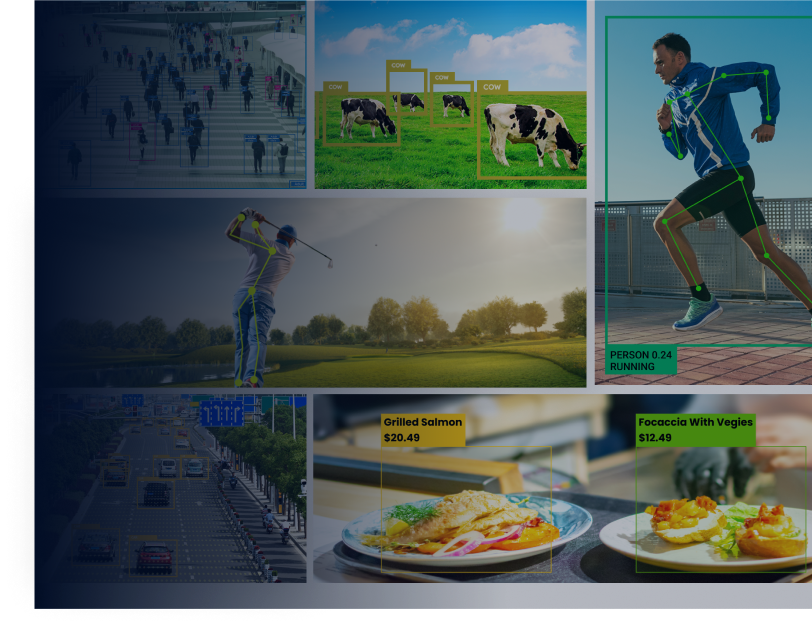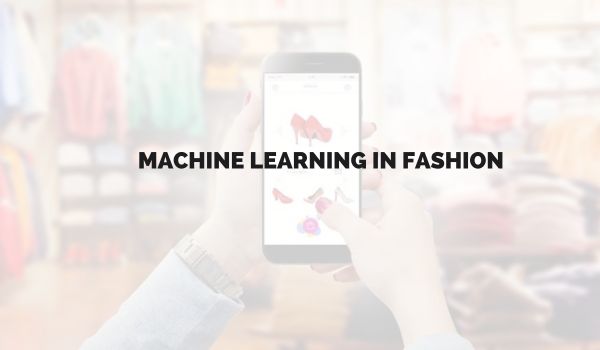In the fashion industry, various retailers have started using artificial intelligence (AI) and machine learning (ML) technologies to revamp their business plans. This is because better customer experiences, higher sales, and lower costs can be achieved through machine learning in fashion.
In 2019, the American department store chain Macy’s joined hands with an AI startup to refine its customer relations through advanced inventory management. Within just one year, Macy’s saw a significant turnaround in terms of operational efficiency and customer satisfaction.
However, it is not just Macy’s that is implementing machine learning and AI-based technologies to maintain competitiveness. Brands like Nike, Uniqlo, and Burberry, which cover both mass-market and luxury segments, are also adopting AI. A 2021 report by McKinsey & Company highlighted that 85% of retail executives plan to increase their investment in AI over the next few years.
So, what does this mean for the fashion industry? In this blog, we will explore how machine learning is transforming all operations in the fashion industry, from optimizing supply chains to offering personalized shopping experiences for customers.
What Is Machine Learning in Fashion?
We all have heard how machine learning is shaking up the fashion world by analyzing vast amounts of data to give fashion businesses a sharper edge. But how does it even do that, you may ask? Well, it all starts with data. Fashion companies have access to an enormous amount of data, from customer preferences and shopping habits to social media trends and sales figures. Machine learning algorithms process this data at a much faster rate than humans, enabling companies to gain insights that they would have missed before.
One way machine learning is impacting the fashion industry is through personalization. By analyzing customer data, companies create tailored recommendations for individual customers, increasing the chances of making a sale. This not only improves the customer experience but also increases customer loyalty and retention.
Fashion Technology Examples
Top brands are relying on AI and machine learning to give personalized style advice, better manage inventory, and even create smart clothes. The fashion technology examples we will discuss below will show how technology is changing fashion, making it more efficient and customer-focused.
1. Trend Forecasting
We all know that fashion does not stay the same, and especially in the modern world, any fashion style just becomes a trend. Therefore, it has been said that fashion is a notoriously fickle industry.
Now, social media has a lot more power in fashion trends because of famous influencers and popular posts rather than new designs and patterns of clothes. It has become important to stay ahead in this ever-changing market, so retailers need to predict which styles will become popular before they hit the mainstream. Machine learning (ML) helps them do this effectively.
ML algorithms are best when it comes to analyzing vast amounts of data from diverse sources to identify emerging trends. Let’s take a look at how it works.
- Data Gathering: ML models ingest data from various sources, including social media conversations about fashion trends, fashion blogs, runway shows, celebrity styles, search engine queries, and historical sales data.
- Pattern Recognition: The algorithms analyze this data to identify patterns and correlations. For instance, they might discover a surge in social media mentions of a particular color or garment style.
- Trend Prediction: The models predict which styles will likely gain popularity in the coming seasons based on the identified patterns.
Benefits of ML-powered Trend Forecasting.
- Reduced Risk: Knowing what trend will soon gain popularity can help retailers avoid investing in styles that may flop and minimize the risk of excess inventory.
- Faster Response: ML not only predicts upcoming trends quickly but also allows brands to act fast so that they can get the right products on shelves faster and capitalize on peak demand.
- Increased Sales: Putting trendy and viral clothes on shelves lets retailers attract more customers, which also boosts sales and revenue.
- Improved Decision-Making: Decisions about products and inventory are critical for any retailer, which is why ML algorithms are used to provide data-driven insights. They analyze lots of data to find trends and patterns that humans might miss, allowing brands to make smarter choices and avoid costly mistakes.
- Boost Brand Image: ML’s best service is predicting trends, which helps brands stay ahead and offer the latest styles. This makes them trendsetters, attracting new customers and keeping current ones loyal. Being seen as trendy strengthens the brand and builds a loyal customer base.
Real-World Example: Zara’s AI-powered Success
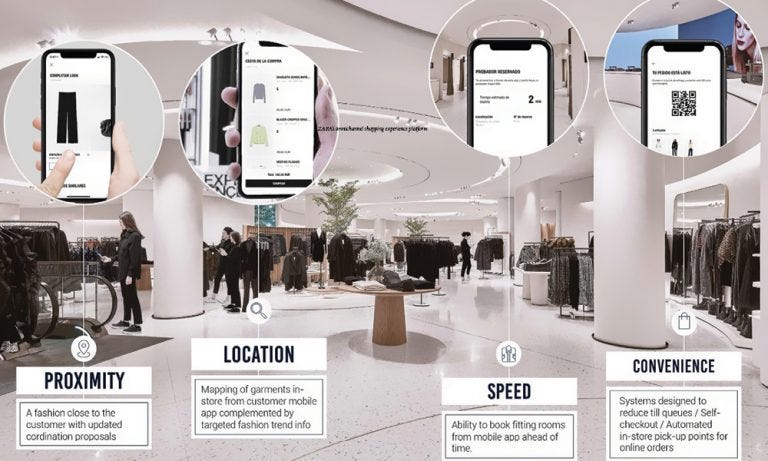
Zara, the fast-fashion giant known for its trendy and affordable clothing, is a prime example of how machine learning in fashion can easily revamp fashion forecasting.
Zara has also used AI to inspect massive data, including social media trends, search queries, and past sales figures, to ensure no one else can steal the limelight of fashionista clothing. Using AI allowed them to identify emerging trends early on and quickly adapt their production processes to meet demand.
For instance, if they detect a surge in online searches for a specific type of jacket, they can adjust their production line to get similar jackets in stores within weeks. This rapid response time allows Zara to stay ahead of competitors and offer customers the latest styles they crave.
2. Personalized Customer Experiences
We’ve all experienced times when shopping stops being enjoyable.
Finding the right outfit has become daunting these days. But what if you walk into a store that feels like it knows you? No more endless browsing or irrelevant recommendations.
Personalized experiences powered by machine learning are transforming the way we shop for clothes. Here’s how ML personalizes the customer journey:
Understanding Your Style – To know customers’ preferences over clothing, ML algorithms can analyze various data points to understand your unique style preferences. This data can include:
- Purchase History: Past purchases reveal your preferred styles, colors, brands, and sizes. ML models use this information to make personalized suggestions.
- Browsing History: Your browsing history can reveal what styles and garments you are interested in but haven’t yet purchased. Based on this, retailers can offer targeted recommendations.
- Social Media Activity: Retailers can also use their customers’ loyal social media activity to understand their fashion preferences. For instance, if you follow many streetwear influencers, the algorithm may suggest similar styles from their collection.
Creating Personalized Recommendations: Based on the data analysis, ML algorithms can recommend products you’re more likely to love. This can take the form of:
- Homepage Recommendations: When you log in to a website, you see clothing suggestions curated just for you based on your purchase and browsing history.
- Virtual Stylists: Some retailers have created virtual stylists powered by ML that can help you create outfits based on your style preferences, weather, and upcoming events.
Benefits of Personalized Experiences
- Increased Customer Satisfaction: When customers feel understood and valued, they are more likely to be satisfied with their shopping experience. This boosts customer retention and loyalty.
- Higher Conversion Rates: Personalization leads to relevance, which increases the chances of customers making a purchase. According to research by Accenture, 91% of consumers are more likely to shop with brands that provide them with relevant offers and recommendations.
- Better Inventory Management: With personalized experiences, retailers can better understand customer demand and stock their stores with the right products, reducing excess inventory and optimizing sales.
Real-World Example: Stitch Fix’s Personalized Styling
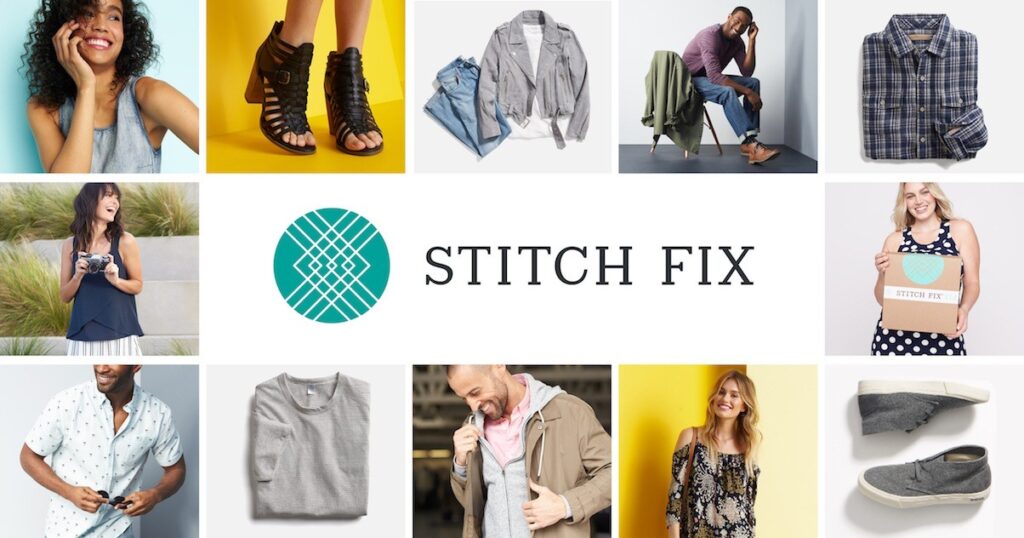
Stitch Fix, an online personal styling service, has successfully implemented machine learning to provide personalized customer recommendations. They use algorithms to analyze data from each customer’s style profile, purchase history, feedback on previous items, social media activity, and even their Pinterest boards. This allows them to create curated boxes of clothing tailored to each individual’s preferences and needs.
This personalized approach has helped Stitch Fix maintain high customer satisfaction and retention while also seeing significant growth in its business. Their net revenue increased by 29% in 2019 compared to the previous year.
3. Supply Chain Optimization
The journey of a garment, from raw materials to your closet, involves a complex web of processes. It is one of the hectic tasks for any fashion retailer to make an efficient and smooth supply chain process of raw materials and components and reduce time-to-market.
Any inefficiencies in this supply chain can cause stockouts, overproduction of unwanted items, and ultimately lost profits. Hence,e now we have machine learning in fashion, which offers a powerful solution for optimizing the fashion supply chain. This solution handles most of this daunting task,k ensuring a smoother flow of goods and happier customers.
ML in Action: Optimizing Every Step
Here’s how ML streamlines the fashion supply chain:
- Demand Forecasting: Previous data matters to any fashion industry as it helps to look out what were the latest sales data, current trends, and external factors such as weather patterns to forecast future demand for certain items.
- Production Planning: The fact that ML easily optimizes production plans based on demand estimates, guarantees companies to produce the proper quantities of each item at the correct time. by doing so you can lower lead times and timely product delivery.
- Inventory Management: Not only this, it tracks inventory levels in real-time and predicts potential shortages or surpluses. This lets retailers proactively adjust their ordering patterns and avoid stockouts or costly markdowns on unsold items.
- Dynamic Pricing: Knowing beforehand market trends and competitor pricing gives the industry an edge to set optimal prices for each item. This ensures retailers maximize profits while remaining competitive in the market.
Benefits of ML-powered Supply Chain Optimization
- Reduced Costs: The cost of the supply chain process is huge, but now we have less overstock, fewer stockouts, and optimized production, which leads to major cost savings. This is especially valuable for retailers operating on thin margins.
- Improved Efficiency: To make a supply chain efficient, ML is used in all sorts of complex tasks, whether it’s buying goods and components, so there’s less room for human error and delays. This leads to a more efficient and streamlined system.
- Better Customer Experience: Retailers demand accurate predictions to ensure that products are available when customers want them, leading to increased customer satisfaction and loyalty.
- Increased Efficiency: ML streamlines processes and improves overall supply chain responsiveness. This results in faster lead times and timely deliveries, increasing customer satisfaction.
- Better Inventory Management: The fashion industry now easily manages its inventory levels because it can precisely predict demand and optimize production, reducing excess stock and improving overall profitability.
Real-World Example: Nike’s Data-Driven Inventory Management
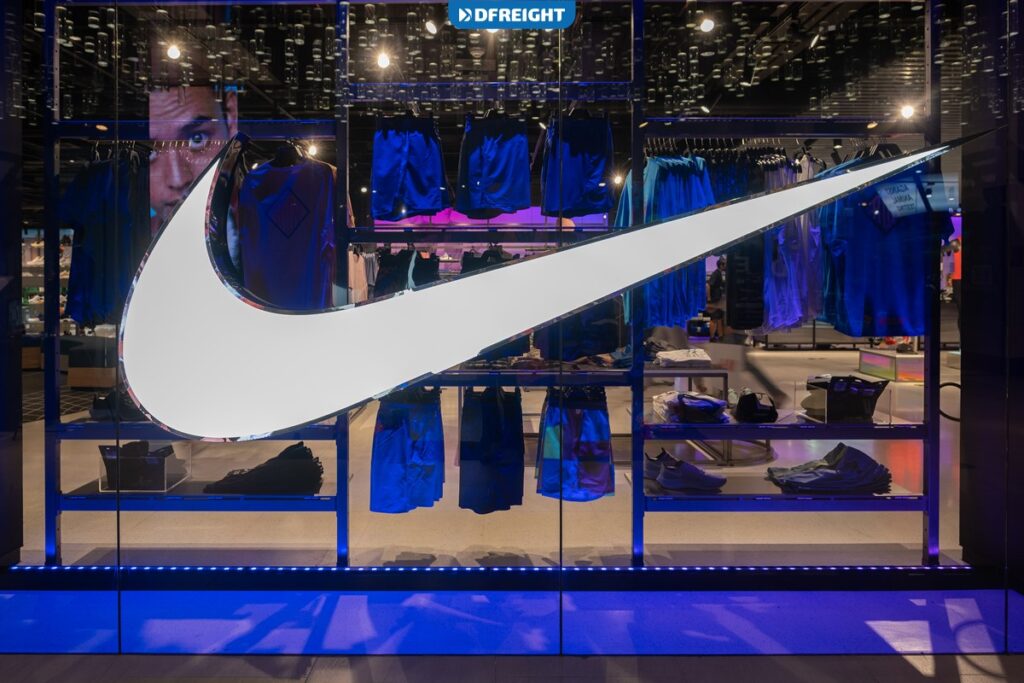
Nike, a global sportswear giant, implemented ML to optimize its vast supply chain. As Nike is in demand all over the world, it has a wider supply chain. It needs advanced ML algorithms to analyze sales data from various regions and predict demand for specific shoes and apparel.
This upgraded Nike’s data-driven decisions and allowed them to adjust production plans and inventory levels to ensure popular items are readily available in stores worldwide. Now, ML has become its visible partner, letting it identify potential disruptions in the supply chain, such as raw material shortages or delays at factories. This proactive approach permits them to mitigate risks and ensure a steady flow of products to meet customer demand.
4. Automated Product Tagging and Categorization
A dream come true for any fashion industry, where mountains of product images are automatically tagged and categorized, saving countless hours and ensuring accuracy. This is the power of machine learning in action, specifically in automated product tagging and categorization for fashion. Here’s how it works:
The Power of Image Recognition
At the heart of automated tagging lies image recognition technology. ML algorithms are trained on massive datasets of labeled fashion images. These images contain various attributes like clothing category (dress, shirt, pants), color, pattern, and style (sleeveless, floral print, skinny fit). By analyzing these labeled examples, the algorithms learn to identify patterns and relationships between the visual features of the image and its corresponding tags and categories.
Benefits of Automation
- Increased Efficiency: The most frustrating and tedious process is manual tagging. Now automation is here to free up employees to focus on more strategic tasks, boosting overall productivity.
- Improved Accuracy: The human brain can easily make mistakes when dealing with massive amounts of data. That is why ML algorithms are needed to consistently tag products with high accuracy, minimizing inconsistencies and ensuring reliable product information.
- Enhanced Search Functionality: If the tagging is accurate it will allow customers to easily find the products they’re looking for using specific keywords. This improves search functionality and the overall customer experience.
- Data Consistency: Not only this, it guarantees consistent tagging across all products, making data analysis and inventory management more efficient. It also allows for easier integration with other systems and platforms.
Real-World Example: ASOS’s Automated Product Tagging
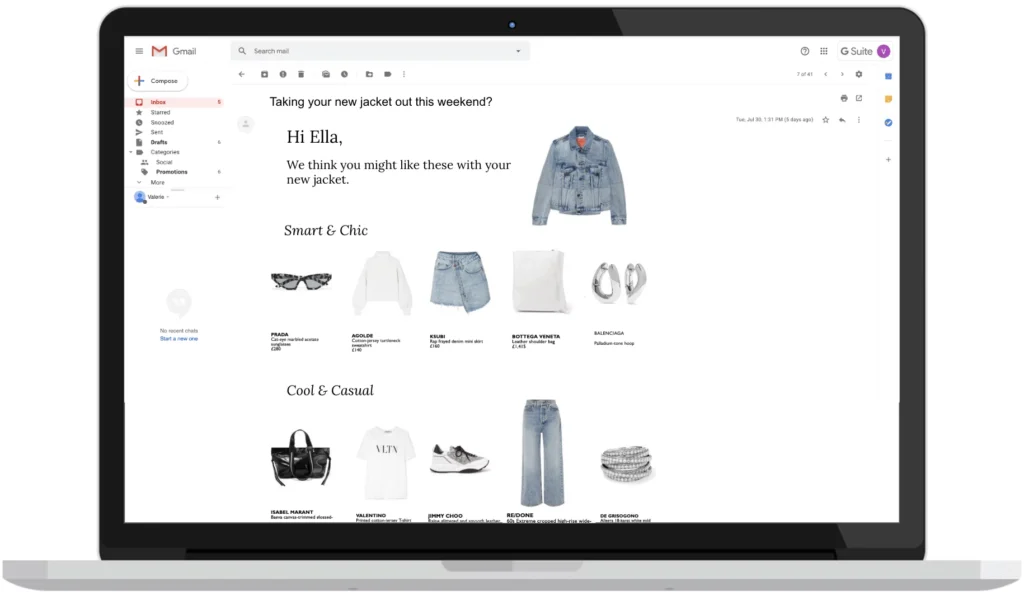
ASOS, a popular online fashion retailer, automatically tags and categorizes its products using ML algorithms. With over 85,000 products on their website, manual tagging was simply impractical.
When they started implementing automation, ASOS could accurately tag and categorize each product within minutes instead of hours or days. Which has improved search functionality and upgraded the overall customer experience on their website.
5. Quality Control and Defect Detection
The main aspect of any fashion industry that sets its entire reputation in the market is quality. Because customers are not only attracted to trendy clothes, but quality matters, and this converts them into loyal customers.
But to maintain this quality and ensure there are no defects in clothing, we have exceptional assistance available. Machine learning has proven to be a powerful tool in automating quality control processes and detecting defects, helping fashion companies maintain high standards of quality. Take a look at how it works.
Image Analysis for Defect Detection
Similar to automated tagging, image recognition technology is needed. ML algorithms are used in this technology to analyze product images and identify defects. As the algorithm which is used is trained on datasets of labeled images showcasing various types of defects, such as holes, loose threads, or stains.
By comparing new images with labeled examples, the algorithm learns to spot defects and alerts manufacturers during production. This speeds up quality control and improves accuracy, catching defects that humans might miss.
Benefits of ML-powered Quality Control
- Reduced Defects: Fashion industries need early detection to know the flaws so that they can minimize the number of defective garments reaching customers, maintaining brand reputation and customer satisfaction.
- Increased Efficiency: Maintaining quality is not as easy as it sounds. It is a complex task, as one mistake leads to lower sales production. Therefore, automation inspection is best, as it frees up human inspectors to focus on complex quality checks and problem-solving, leading to a more efficient production process.
- Improved Consistency: ML algorithms ensure consistent quality standards across large production batches, minimizing human error and ensuring all garments meet brand specifications.
- Reduced Costs: Catching defects early translates to fewer returns and lower rework costs, ultimately improving a company’s bottom line.
Real-World Example: Levi’s Leverages AI for Quality
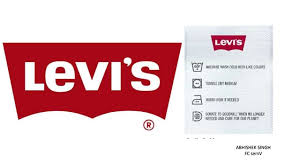
Levi’s, the iconic denim brand, is a prime example of how ML is transforming quality control. They’ve implemented an AI-powered system that analyzes high-resolution images of jeans to identify defects like stitching errors, fabric inconsistencies, and hardware issues. This system allows Levi’s to catch defects early in the production process, ensuring their jeans meet their high-quality standards before reaching stores and customers.
6. Price Optimization
In the ever-competitive fashion industry, striking the right balance between price and profitability is crucial. Not only does it help to maintain long-term customers but also lets your industry maintain a standard in a market as well. Setting prices too high can deter customers while underpricing can lead to missed profits. This is where machine learning steps in as a powerful tool for price optimization.
ML: The Price Whisperer
Machine learning algorithms are proven to be remarkable in analyzing vast amounts of data for any task, whether it is to determine the optimal price point for each item. Here’s how it works:
- Data Gathering: ML models ingest data from various sources, including historical sales data, competitor pricing, customer demographics, and current fashion trends.
- Demand Forecasting: The algorithms analyze this data to predict how much demand there will be for a specific item at different price points.
- Price Optimization: Based on the demand forecast and other factors like production costs and profit margins, the ML model recommends the optimal price that maximizes profitability while remaining competitive in the market.
Benefits of ML-powered Price Optimization
- Increased Revenue: By setting optimal prices, retailers can maximize their profits without sacrificing sales volume.
- Improved Customer Satisfaction: ML ensures prices are competitive, leading to happy customers who perceive good value for their money.
- Reduced Price Markdowns: Accurate pricing minimizes the need for significant markdowns to clear out unsold inventory.
- Dynamic Pricing: Some ML models can even recommend dynamic pricing strategies, adjusting prices based on factors like real-time demand and competitor activity.
Real-World Example: Amazon’s Algorithmic Pricing
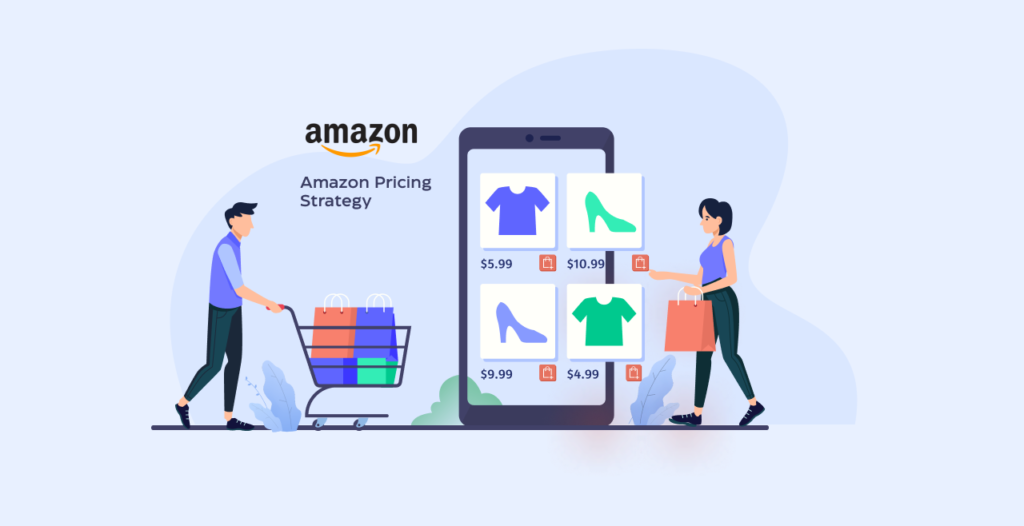
Retail giant Amazon is a leader in using ML for price optimization. Their sophisticated algorithms inspect massive bundles of data in real-time to adjust prices for millions of products, including clothing items. As Amazon is such a significant e-commerce platform with lots of loyal customers all over the region, this lets it offer competitive prices while maximizing its profit margins.
7. Virtual Try-Ons and Augmented Reality
We’ve all had times when we just don’t feel like going shopping and trying on clothes.
Sometimes, we need new clothes but prefer to stay comfortable on our couches.
But now we have this feasibility where customers can try on clothes without ever stepping into a fitting room. This is made possible through virtual try-on technology powered by machine learning.
Here’s how AR brings virtual try-on experiences to life:
- Leveraging Your Device: VTO utilizes your smartphone or tablet camera.
- Augmenting Your Reality: AR software superimposes a digital image of the clothing item onto a live video feed of yourself.
- Interactive Experience: Some VTO experiences allow you to adjust the size and color and even see how the garment moves as you virtually “wear” it.
Benefits of Virtual Try-Ons
- Convenience: Try on countless outfits from the comfort of your home or anywhere with your device.
- Improved Fit: Reduce the risk of ill-fitting clothes by virtually checking the size and style before you buy.
- Enhanced Decision-Making: See how different styles look on you, allowing for more informed purchase decisions.
- Increased Sales: VTO can lead to higher conversion rates as customers feel more confident about their online purchases.
Real-World Example: Gucci’s Virtual Try-On App
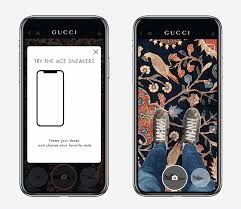
One notable example of fashion brands leveraging virtual try-ons and augmented reality is Gucci. This luxury fashion house has embraced AR technology, incorporating apparel recognition software to strengthen the shopping experience for its tech-savvy consumers.
Gucci’s app allows customers to virtually try on their iconic sneakers. By using their smartphone camera, users can see how different pairs of shoes look on their feet in real time. This feature not only provides a fun and interactive way to engage with the brand but also helps customers make more informed purchasing decisions, reducing the likelihood of returns. Gucci’s innovative use of AR technology underscores its commitment to blending tradition with cutting-edge modern technology.
Wrapping up
Machine learning has changed fashion in lots of ways. It’s not just about making clothes; it’s about everything behind the scenes too. Like, it helps companies manage their stuff better and makes shopping more fun for us. And guess what? It’s only going to get cooler from here! So whether you’re a shopper or a store owner, get ready for even more cool stuff coming your way thanks to machine learning. Keep your gadgets charged, ’cause you never know when the next big trend will hit! And with AI helping out, you’ll always be in style!


Dawood is a digital marketing pro and AI/ML enthusiast. His blogs on Folio3 AI are a blend of marketing and tech brilliance. Dawood’s knack for making AI engaging for users sets his content apart, offering a unique and insightful take on the dynamic intersection of marketing and cutting-edge technology.

